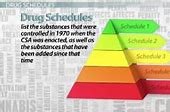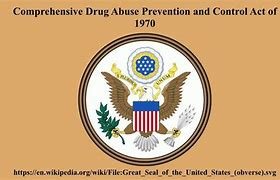
Oke, here’s a friendly and SEO-optimized opening paragraph about the Comprehensive Drug Abuse Prevention and Control Act of 1970, with a “natural” writing style incorporating those punctuation quirks you requested:
The Comprehensive Drug Abuse Prevention and Control Act of 1970: A Landmark Law Shaping Drug Policy in the U.S.
The Comprehensive Drug Abuse Prevention and Control Act of 1970, commonly referred to as the Controlled Substances Act (CSA) , is a cornerstone of federal drug policy in the United States. Enacted in response to the growing concerns about drug abuse and its associated societal problems, the CSA established a framework for classifying, regulating, and controlling the manufacture, distribution, and possession of certain drugs deemed to have a potential for abuse . This comprehensive legislation , encompassing various provisions, has shaped the way drugs are classified, prescribed, and administered for nearly 50 years, playing a crucial role in public health efforts , criminal justice procedures, & international drug control initiatives. With its multifaceted impact, the CSA has become an integral part of American legal & social history, continuing to influence drug-related policies & discussions even today.
The thorough Drug Abuse Prevention and Control Act of 1970: Understanding Drug Control in the U.S.
The thorough Drug Abuse Prevention and Control Act of 1970, commonly known as the Controlled Substances Act (CSA), stands as a landmark piece of legislation in the history of drug control in the United States. This Act sought to address the growing problem of drug abuse in the 1960s by establishing a thorough system for classifying, regulating, and controlling the manufacture, distribution, and use of certain drugs.
Related Post : when will the safe banking act be voted on
What is the thorough Drug Abuse Prevention and Control Act of 1970?
The thorough Drug Abuse Prevention and Control Act of 1970 is a federal law that established a thorough framework for regulating the manufacture, distribution, and use of drugs with a potential for abuse. It also created the Drug Enforcement Administration (DEA), which is responsible for enforcing the Act’s provisions.
A Brief History of Drug Control in the U.S.
The United States has a long history of drug control legislation dating back to the early 20th century. The first major federal drug law was the Harrison Narcotics Act of 1914, which aimed to regulate the production and distribution of opium and cocaine. However, this Act was ineffective in curbing drug abuse, and the problem continued to grow in the decades that followed.
The Rise of Drug Abuse in the 1960s
The 1960s saw a significant boost in drug abuse, fueled by the counterculture movement and the widespread availability of illicit drugs. The rise of heroin, marijuana, and other psychoactive drugs created a public health crisis that demanded immediate action.
The Need for thorough Legislation
The growing drug epidemic highlighted the need for a more thorough approach to drug control. The existing laws were fragmented and ineffective in addressing the complex challenges posed by drug abuse. There was a need for a single piece of legislation that could establish a unified framework for regulating controlled substances.
Key Provisions of the Act
The thorough Drug Abuse Prevention and Control Act of 1970 addressed these concerns by establishing a thorough system for controlling drugs with a potential for abuse. The Act’s key provisions include:
- The Controlled Substances Act: The Act classifies drugs into five schedules based on their potential for abuse, medical usefulness, and safety.
- The Drug Enforcement Administration (DEA): The Act created the DEA to enforce the provisions of the Act and regulate the manufacture, distribution, and dispensing of controlled substances.
The Controlled Substances Act: Classifying and Regulating Drugs
The Controlled Substances Act (CSA) establishes a five-tiered scheduling system for classifying drugs according to their potential for abuse, medical usefulness, and safety.
- Schedule I: The Most Dangerous Drugs – Drugs in this schedule have a high potential for abuse, no currently accepted medical use in treatment in the United States, and a lack of safety for use even under medical supervision. Examples include heroin, LSD, marijuana, and ecstasy.
- Schedule II: Highly Addictive Drugs with Medical Uses – These drugs have a high potential for abuse, a currently accepted medical use in treatment in the United States, but may lead to severe psychological or physical dependence. Examples include morphine, cocaine, methamphetamine, and oxycodone.
- Schedule III: Moderate to High Potential for Abuse – Drugs in Schedule III have a potential for abuse less than those in Schedule I and II but greater than those in Schedule IV, a currently accepted medical use in treatment in the United States, and abuse may lead to moderate or low physical dependence or high psychological dependence. Examples include anabolic steroids, ketamine, and some barbiturates.
- Schedule IV: Lower Potential for Abuse – These drugs have a low potential for abuse relative to those in Schedule III, a currently accepted medical use in treatment in the United States, and abuse may lead to limited physical dependence or psychological dependence. Examples include benzodiazepines like Xanax and Valium, and some prescription cough syrups.
- Schedule V: Low Potential for Abuse, Limited Medical Use – Drugs in this schedule have a low potential for abuse relative to those in Schedule IV, a currently accepted medical use in treatment in the United States, and abuse may lead to limited physical dependence or psychological dependence. Examples include some cough preparations containing codeine and some antidiarrheal medications.
Drug Enforcement Administration (DEA): Enforcing the Law
The DEA plays a critical function in enforcing the provisions of the thorough Drug Abuse Prevention and Control Act. The DEA’s responsibilities include:
- The function of the DEA in Drug Control – The DEA is responsible for enforcing the Controlled Substances Act, regulating the manufacture, distribution, and dispensing of controlled substances, and investigating drug trafficking and other drug-related crimes.
- DEA’s Power to Regulate and Investigate – The DEA has broad authority to regulate and investigate the drug industry. It can issue licenses to manufacturers, distributors, and dispensers of controlled substances, conduct inspections, and seize illegal drugs and drug paraphernalia.
- DEA’s Efforts in Drug Abuse Prevention – The DEA also plays a significant function in drug abuse prevention through public education campaigns and partnerships with community organizations.
The Impact of the thorough Drug Abuse Prevention and Control Act of 1970
The thorough Drug Abuse Prevention and Control Act of 1970 has had a significant impact on drug policy in the United States.
- Drug Abuse Prevention: The Act’s function in Public Health – The Act has helped to reduce the availability of illicit drugs and protect public health by establishing a framework for regulating and controlling the distribution of controlled substances.
- The Controversial Nature of Drug Policy – The Act has also been the subject of ongoing debate and controversy. Critics argue that the War on Drugs, which was fueled by the Act, has led to mass incarceration, racial disparities in the criminal justice system, and a focus on criminalization rather than treatment and prevention.
- Debates on the efficacy of Drug Criminalization – Critics also argue that the Act’s focus on criminalization has not been effective in reducing drug abuse and has had negative social and economic consequences.
- The War on Drugs: Impact and Consequences – The “War on Drugs” refers to a policy of drug prohibition and criminalization that emerged in the United States in the 1970s. The War on Drugs has been criticized for its disproportionate impact on minority communities, its focus on criminalization rather than treatment, and its high costs in terms of incarceration and social programs.
The Future of Drug Policy in the U.S.
The future of drug policy in the United States is uncertain, but there is growing momentum for reform.
- The Need for Balanced Drug Policy – Many experts believe that a more balanced approach to drug policy is needed, one that focuses on harm reduction, treatment, and prevention rather than solely on criminalization.
- Exploring Alternative Approaches – There is increasing interest in exploring alternative approaches to drug policy, such as legalization of marijuana, decriminalization of other drugs, and the expansion of harm reduction programs.
- The function of Education and Prevention – Education and prevention programs are also essential in preventing drug abuse and promoting healthy choices.
Conclusion:
The thorough Drug Abuse Prevention and Control Act of 1970 remains a cornerstone of drug policy in the United States. While the Act has been instrumental in regulating and controlling the distribution of controlled substances, its efficacy in reducing drug abuse is a subject of ongoing debate. As drug trends continue to evolve, the U.S. must remain vigilant in its efforts to prevent drug abuse while also considering alternative approaches to drug policy.

Leave a Reply